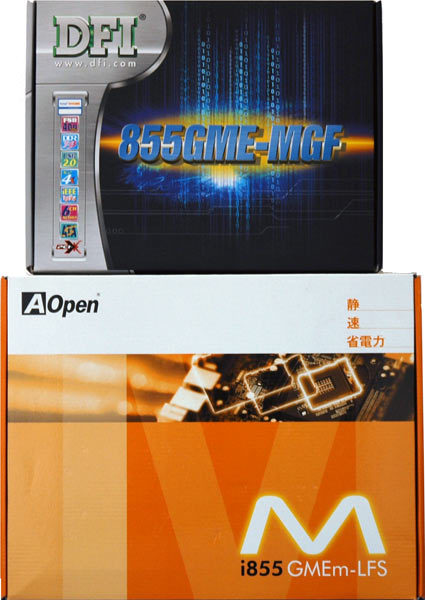Quick and Quiet: Pentium M Desktop Boards by AOpen and DFI
Pentium M Boards By AOpen And DFI Run Quick And Quiet
The Pentium M is a success story that has developed quietly without generating much excitement. The reason for this is that Intel decided to focus on branding the mobile platform known as Centrino, instead of creating a demand for the processor directly. With Pentium 4 clock speeds hitting 3.8 GHz, Intel has been burning its fingers with the Prescott core's high thermals. Meanwhile, the Pentium III architecture has not been discontinued - it has been further developed under the Pentium M brand.
Almost two years ago, Intel presented its first Centrino mobile platform . The idea behind the brand involved not only a processor (Pentium M, code-named Banias), but also a suitable chipset known as the i855 (Odem) and an affordable wireless LAN module (Calexico). This year, the Pentium M was shrunk to the 90 nm process, while the L2 cache size was bumped up to 2 MB; this core is called Dothan . In addition, Intel's processor model numbering was introduced. The only thing that remains unchanged is the i855 platform, which still makes do with single channel DDR333 memory.
Let's take a look at the mobile market. Here, the Pentium M not only faces increasing competition by AMD's Athlon64 processors, but the whole Pentium 4 family as well. While the Pentium 4M comes with Intel's energy saving SpeedStep feature, lots of desktop replacement notebooks are being equipped with regular desktop Pentium 4 CPUs. Even though running a hot desktop processor in a notebook does not make much sense - the main reason being the reduction in battery life caused by the processor's high energy requirements - these devices are enjoying an excellent reception. Many increasingly heavy and non-portable notebook-like devices are being sold for applications where a desktop is not suitable but a lightweight mobile unit is not needed, such as for use in a living room.
>From a performance point of view, Intel's Pentium M at up to 2.1 GHz is not too far behind the fastest P4 processors, although it has to get by with the aged 855 platform and does not support Hyper-Threading. The real eyebrow-raiser of the Pentium M is its remarkably low thermal power of only 21 W, which is approximately 80% less than what a fast Pentium 4 produces! This fact alone was enough impetus for AOpen and DFI to finally create motherboards that allow end users to run the Pentium M in their desktop computers.
Get Tom's Hardware's best news and in-depth reviews, straight to your inbox.
Current page: Pentium M Boards By AOpen And DFI Run Quick And Quiet
Next Page Pentium 4 Vs. Pentium M
Patrick Schmid was the editor-in-chief for Tom's Hardware from 2005 to 2006. He wrote numerous articles on a wide range of hardware topics, including storage, CPUs, and system builds.
